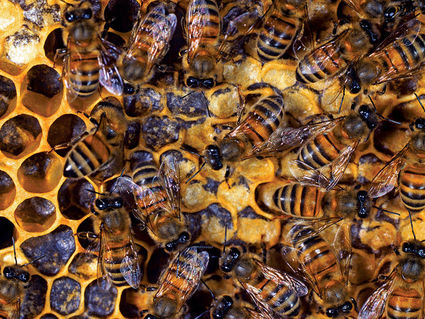Honeybees in Winter
Last updated 1/19/2021 at 8:36pm
Do you ever wonder why you don’t see honeybees in the winter? Well it’s because they don’t leave the hive when temperatures are lower than the mid 50’s. The bees in the hive will stay clustered in the hive to keep the brood area 92 to 95 degrees F. They will eat the honey that they stored all summer to keep the hive alive. The cluster of bees will get tighter and tighter as the temperature drops. Some of the bees will shiver to produce heat. I say shiver but what they do is they flex their shoulder muscles to produce body heat. It is very much like when you workout at the gym and sweat even though it’s cool inside the gym. The bees will rotate their position within the hive and take turns shivering to heat the area.
When the temperatures are cold the bees can’t leave the hive as they don’t have a way to regulate their own temperature sort of like a reptile. Once the temps rise to the mid 50’s some of the bees will venture our in search of blooming plants to help supplement their honey supply. If the hive fails to store enough honey or if the beekeepers robs to much honey the hive will starve. Most of the starvation occurs in late February or early March. Often the weather will warm up and we will get some early flowers. Once the temps rise the bees become more active and the queen will begin to lay more eggs in preparation for spring.
The hive must judge the weather and decide when to build up their numbers in anticipation of the nectar flows that occur late April to June. If the bees delay their spring population growth they might miss the honey flow and not store enough honey for next winter. If they start their spring population growth to early their population in the hive might exceed the honey stores and the hive will starve.
Early spring late winter is a critical time for the bees. Here in Southeast Texas that time is late February. We often get early spring blooms followed by a late frost. Many of the backyard gardeners know this fact well. How many times have you planted tomatoes to loose them to a frost and have to replant. Even if you did not have to completely replant, I’ll bet you spent some time covering and trying to keep the frost away.
For those of you that noticed honeybees on your hummingbird feeders, well mid February is a good time to refill and place them out. Place them out for the bees then keep them out in March for the migrating hummers. Help 2 of natures miracles honeybees and hummingbirds.
Len VanMarion
Texas Master Beekeeper
Texas Master Gardener












Reader Comments(0)